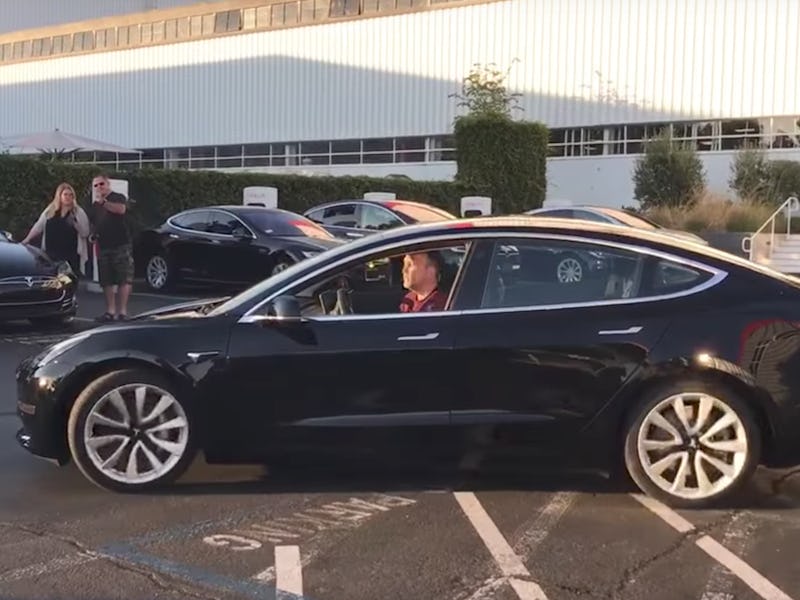
It’s finally here. The Tesla Model 3, one of the most highly anticipated car launches of this year, has officially entered production. On Sunday, the first production model rolled out to the front of the company’s factory in Fremont, California. CEO Elon Musk announced the arrival of SN1 — serial number one — on his Twitter page. Among those outside the factory to catch a glimpse was YouTuber “TehBestGamer505,” who recorded a video of the first model in action.
The Tesla Model 3 is a critical launch for the company. Its $35,000 starting price makes it by far the cheapest car Tesla has ever produced — far cheaper than the Tesla Model S, which starts at $68,000. Despite the low price, the car packs a number of the features you’d expect from a modern Tesla car: a high battery range, an in-car entertainment system, and a suite of Autopilot sensors that will one day enable fully autonomous driving through a software update. It’s cheap, but under the hood this is a car from the future.
Watch the world’s first Tesla Model 3 in action below.
Possibly the most striking thing about the video, uploaded hours after Musk announced the car’s arrival, is that the Tesla Model 3 doesn’t look like a high-tech gadget. In the past, electric cars have struggled with an image problem that made them look awkward on the road. The Model 3, by comparison, is a sleek, sharp-looking car, enough to grab the attention of passersby without standing out as a weird-looking vehicle of the future.
It’s this seamless combination of future-facing yet contemporary design that places the Model 3 in exactly the right position for Tesla to draw in newcomers. The door handles, for example, look like the handles of any modern car until you move in closer and realize they lay flat against the sides of the car, a design cue taken from the Model S and Model X.
Similarly, the shape of the body makes the Model 3 seem like a sleek city vehicle, but under the surface the shape plays a vital role in bringing a battery range of 215 miles to a car that has a battery smaller than 60 kWh. The car has been designed to aim for a drag coefficient of 0.21, which is lower than many competitors, meaning it slices through the air with ease and ensures the car can move further on the same amount of electrical energy.
Tesla estimates that new orders will start shipping mid-2018, meaning the company faces an extraordinary backlog. Nonetheless, with plans to reach an output of 10,000 Model 3 vehicles per week at some point in 2018, the company is making the necessary steps to ensure everyone that wants to own a Model 3 will have the chance.